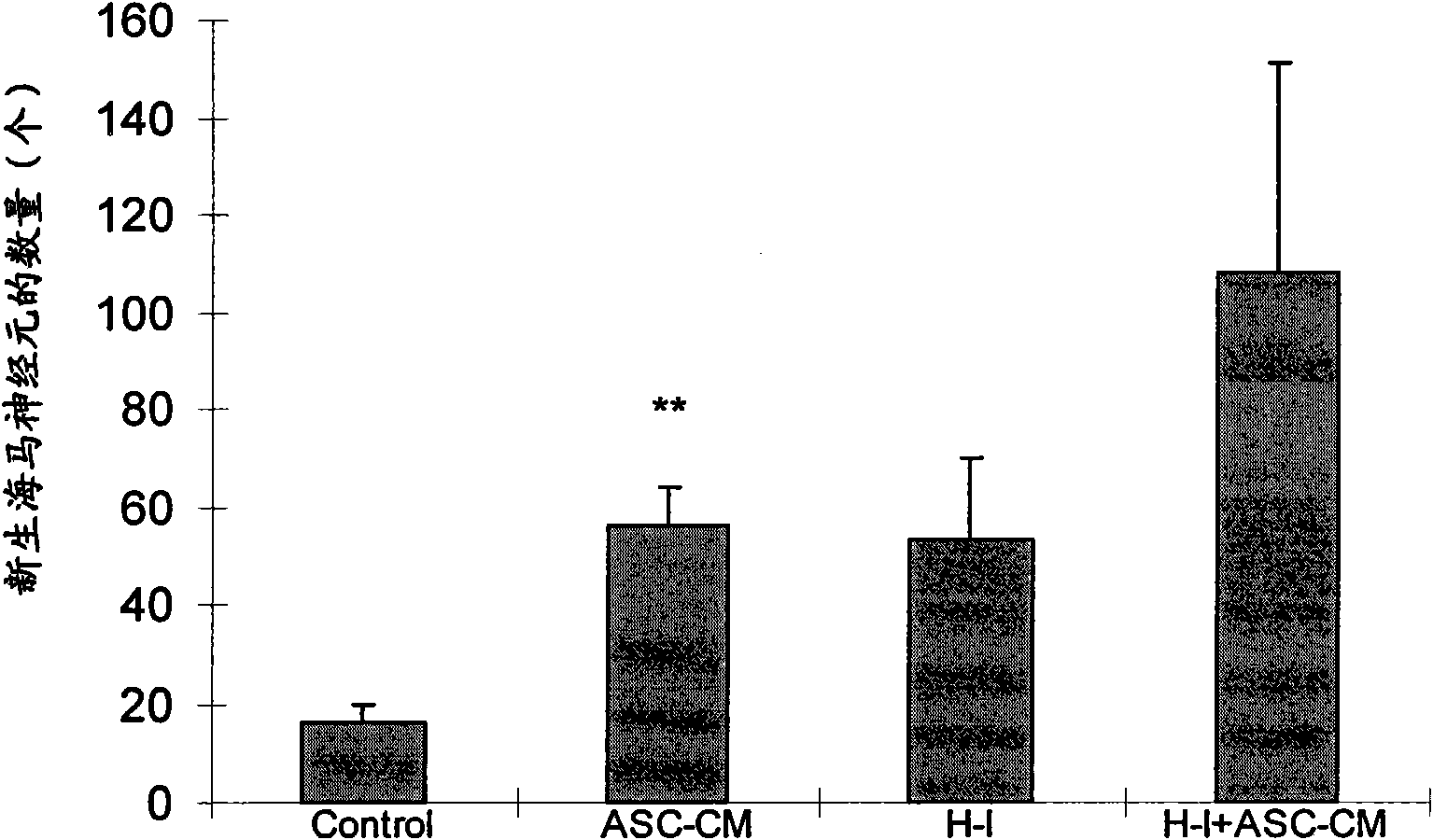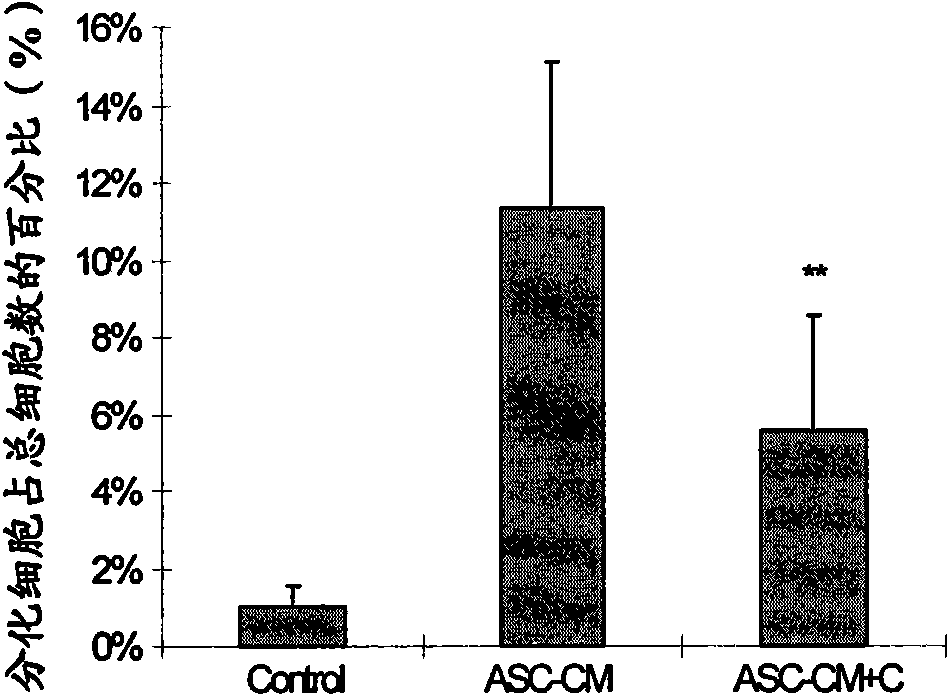Medicament for preventing and treating neurologic damage and related diseases thereof
A technology for nerve injury and disease, applied in the field of in vitro culture of adult stem cells, mixture of neurotrophic factors, and preparation of drugs for the prevention and/or treatment of nerve injury or related diseases, which can solve problems such as adverse reactions and poor effects
- Summary
- Abstract
- Description
- Claims
- Application Information
AI Technical Summary
Problems solved by technology
Method used
Image
Examples
Embodiment 1
[0041] First, the obtained adipose tissue was digested with 1 mg / ml type I collagenase at 37° C. for 1 hour. Then add 50ml of DMEM medium to the digestion solution, and centrifuge at 200g for 5 minutes. Remove the supernatant, keeping the cell fraction at the bottom of the centrifuge tube. The cells were resuspended in fresh DMEM medium, and then the cell suspension was filtered through a 100 μm cell sieve. The cell suspension was centrifuged at 200g for 5 minutes. The supernatant was removed, and the lower cells were treated with erythrocyte lysate at 37°C for 5 minutes. Then centrifuge at 300g for 5 minutes. The obtained cells were resuspended in microvascular endothelial cell medium, and then 4 × 10 6 piece / cm 2 The cell concentration was inoculated in uncoated T75 tissue culture flasks in CO 2 cultured in an incubator (37°C, 5% CO 2 ).
Embodiment 2
[0043] ASC secreted substances were tested for their ability to stimulate endogenous neurogenesis in the rat hypoxic-ischemic brain. ASCs isolated from rat subcutaneous adipose tissue were grown to confluence in EGM2MV medium, and then transferred to Eagle minimal medium (containing 5 mM K + BME, Invitrogen) for 24 hours (in CO 2 Cultured in an incubator at 37°C, 5% CO 2). The culture (ASC-CM) was harvested and concentrated 50-fold using CentriPlus (MW cut-off: 10k). Neonatal (7 day old) rats were subjected to unilateral (left) carotid artery ligation and then exposed to hypoxic conditions (7% oxygen) for 2 hours. 10 μl of concentrated (50-fold) ASC-CM was injected intravenously 1 hour before hypoxia-ischemia (H-I). After 7 days, comparisons were made to animals treated with H-I only. The results showed that ASC-CM pretreatment significantly stimulated the formation of hippocampal neurons induced by hypoxic-ischemic brain injury (108±43, n=3 vs. 53±17, n=3; see figure 1 ...
Embodiment 3
[0045] To further evaluate how concentrated ASC-CM stimulates neurogenesis in vivo, we used the PC12 cell model to investigate whether ASC-CM affects neuronal differentiation by observing the effect of ASC-CM on synapse outgrowth in these cells. The data showed that ASC-CM significantly stimulated the neuronal differentiation of PC-12 cells (see figure 2 ), and showed that this effect was significantly blocked by a specific inhibitor of AMPK kinase (see Figure 3), suggesting that AMPK plays an important role in NGF-induced neuronal differentiation. AMPK is activated by a variety of pathological stresses including hypoxia, oxidative stress, glucose deprivation, and exercise and dietary hormones such as leptin and adipocytokines. AMPK activation plays a protective role against pathological stress, especially ischemic-hypoxic stress, and can reduce infarct volume. AMPK is also activated in hypothalamic neurons under conditions of dietary restriction. It was also recently shown...
PUM
 Login to View More
Login to View More Abstract
Description
Claims
Application Information
 Login to View More
Login to View More - R&D
- Intellectual Property
- Life Sciences
- Materials
- Tech Scout
- Unparalleled Data Quality
- Higher Quality Content
- 60% Fewer Hallucinations
Browse by: Latest US Patents, China's latest patents, Technical Efficacy Thesaurus, Application Domain, Technology Topic, Popular Technical Reports.
© 2025 PatSnap. All rights reserved.Legal|Privacy policy|Modern Slavery Act Transparency Statement|Sitemap|About US| Contact US: help@patsnap.com



